
It is both a privilege and a challenge to helm Asia’s numero uno college for applied art, namely the Sir Jamsetjee Jeejebhoy Institute of Applied Art, Mumbai. But the softspoken dean, Dr Sanjay Pande is up to the challenge—balancing an erudite academic scholarship with the detailed eye of an illustrator and book designer. “Creativity is great,” he says, “but it has to be linked to commerce and a canvas.” Unsurprising, given that the focus of this sister of the Sir JJ School of Art has always been the vivid needs of the advertising industry, with its specialisations in photography, stage design, illustration, typography and calligraphy. With a persistent demand for autonomy that only seems to get louder by the day, here’s finding out just why he and other faculty believe it’s the best course of action for the institute. After all, he’s taught here for close to three decades before helming its august portals.
When students come to JJ, it's not just a legacy they inherit, but the full benefits of an atmosphere that encourages creativity to thrive.
Little things add up. Our faculty which is a winsome blend of professional experience and academic qualifications goes all out with the students. Then again, we don't have any formal break, though classes are conducted between 8:45 am and 3:30 pm. Students can choose to go pick up a chai or a snack when they want to a subtle but effective way to impress upon them that both freedom and responsibility go hand in hand.
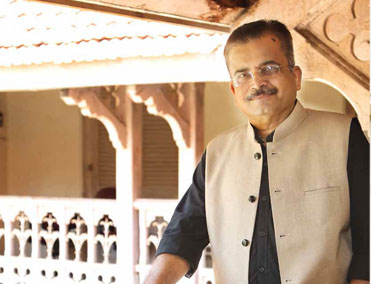
Exam time which brings with it a flurry of nerves is dealt with by allowing students to listen to music while they are creating or painting something; for the simple reason that you are at your most imaginative only when you are relaxed. Each of our classrooms is wellventilated with ample moving space and light for the students an absolute must for the fine arts. Then again, there is this well-equipped illustration studio, and photography studio with the latest equipment. There is a separate room for spray painting as well as an audio visual room. Each facility is carefully chosen to provide students maximum exposure to their craft.
The institute's library has more than 10, 000 books and many periodicals in its collection and it is one of the most popular places in the college.
Similarly, we have a Print-shop with four printing machines and a complete infrastructure of a Silk Screen Printing Studio to explain to the students the intricacies of the printing process. So you see there is a lot of stress on learning by doing, above all else.
Come February, and there is an exhibition of the student's work where industry honchos and the general public get a chance to take a closer look at what they've been doing. This is also the time when placements take place.
There is no compulsion of dress code either students wear what they are comfortable in. Besides, all through the year we have ad gurus like Prahlad Kakkar, Piyush Pande and the rest addressing the students this affords them an exposure that goes well beyond books and makes for a peaceful atmosphere on campus. In all these years, we have not had a single episode of student unrest and discord there is no need actually! There is an open-door system of communication and voices are heard.
Long after they have passed out, you have students, continuing to come to the college and fondly reminiscing over the time they spent here.
"Art and technology need to go hand in hand. It's a superfast world and students must adapt to the newer ways of selling and marketing from telecommunication to mobile based applications"
Being a government college, admission criteria are strictly adhered to. All entries happen through the Common Entrance Test. There are three government colleges in the state that teach fine arts the other two are at Nagpur and Aurangabad. JJ is the most coveted, though. There are 500 kids who are taken on for the undergraduate programme namely the Bachelors’ of Fine Arts, with specializations that start in the third year in the following streams, namely: Photography, Stage design (given the massive increase in events and award functions), illustration, typography and calligraphy.
For the Masters' course in Fine Arts, there are only about 20 seats in all—that’s how stringent the criteria become as you go on.
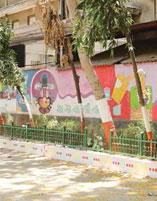
Well, the syllabus definitely needs to undergo a change and become more contemporary. Advertising is changing by the minute and the canvas is becoming broader and more competitive with newer media entering the fray every day. What we teach here has to reflect that fully. Also, we (the current management) would like to press for a uniform syllabus for all the three government applied arts colleges at Nagpur, Aurangabad and JJ. This will not only assure quality education, but also bring in a level playing field and an assured standardized education for all. As things stand today, a student from Nagpur can’t be brought to study at JJ despite being in the same year for the syllabus he or she happens to be studying there is different.
Secondly, there have been these longstanding vacancies for professors some of them since 1993. Sure, we have an enthusiastic staff of 22, but we are largely supplemented and powered by guest lecturers and visiting faculty. This needs to change.
It is my personal opinion that the system of evaluation needs to be revamped completely. Abroad, there is a very effective and holistic system of having a student make a presentation to the jury. The presentation is interactive, detailed and gives every opportunity to the candidate to showcase his knowledge and skill. I would like to see the same happen here written examination replaced by viva voce.
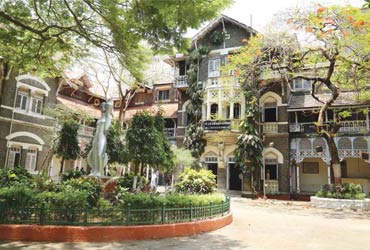
Well, from the time GH Rajadhyaksha was dean, there seems to be an evolving consensus amongst faculty for autonomy at various levels—academic, administrative and economic.
A proposal to the effect has been made to the state government and for starters we are looking at academic autonomy that we believe will give us the leeway and space to contemporize and standardize the syllabus in a manner that will keep in mind the latest socio-economic-cultural and industrial trends.
So be it a one year course that exclusively focuses on copywriting for ad agencies, or short term design courses that keep in the mind the ever advancing technological changes, it gives us a lot more room for manoeuvre. Visual media is in a constant state of flux, there are new modes of expression every day and the student must be versatile and able to grasp them—as well as add to them.
We would also like to include the JJ School of Architecture under the all encompassing umbrella of design for architecture is an indispensable part of print media.
Similarly, with autonomy we will be able to appoint faculty and staff that we feel will be best suited to honing the students the way the ad world deserves.
JJ is one of the best known brands in the country, and it would be great if students could get a degree from an autonomous institution that is able to own the scope of its syllabus and systems.
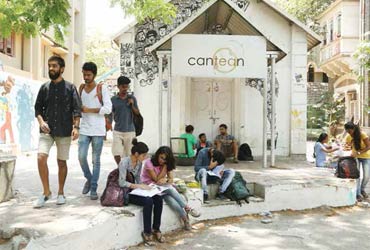
To see it rank amongst the finest colleges internationally and become a deemed University.
For this, art and technology need to go hand in hand. It’s a superfast world and students must adapt to the newer ways of selling and marketing from telecommunication to mobile-based applications. They can’t resist change, they have to ride it—see what the audience needs, and then articulate the needs through their work. For that, the course needs to become more professional and relevant.
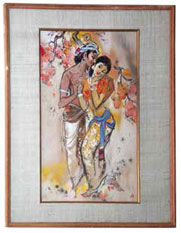
It has been a long and wonderful innings, no doubt, and I am grateful for all that I have seen and learnt. I was born and educated in Nagpur and opted to study fine art in an era where such a course was usually seen as the resort of the lazy and the disinterested. Luckily, my parents, even in those days were liberal and forward-thinking and let me follow my inclination.
I passed out from RTM Nagpur University in 1983, “first class first” as they say. I was awarded a fellowship for the same by the Government Chitrakala Mahavidyalay. Over the years, I also completed my Masters in Fine Arts and PhD from Nagpur.
I worked as a visualizer in the art department of the ad agency Hindustan Thompson in New Delhi. I was also a sales associate at the Hyatt Regency. But then, teaching was a passion from the start. I had had a taste of how wonderful and rewarding it could be during my fellowship that required me to teach a bit. In 1986, I joined JJ Institute as a professor of advertising and for over 28 years I taught theory. Being in a transferable job, I have also been posted to the fine arts colleges in Nagpur and Aurangabad. I served as lecturer at the Government Chitrakala Mahavidyalay from 2004 to 2014 and lecturer at the Government School of Art, Aurangabad between 1994 and 2004.
Along the way, I have kept in touch with the love of my life illustrating and caricaturing. Luckily, as a lecturer I had weekends to indulge my art to the fullest.
A particularly memorable episode was when none other than the late Balasaheb Thackeray, himself a ferociously talented cartoonist--went through a caricature I had done of him. He had dropped in to visit the dean MG Rajadhyaksha over a cup of tea when I was summoned to his cabin.
"Dedication to your chosen path in life is absolutely fundamental. When you are dedicated, there’s no end to what you can achieve with your time and energy"

To my surprise and nervousness, Balasaheb was carefully poring over my work. Thankfully, he really liked what I had done and was very appreciative.
Apart from this, I have also done a lot of work for the Illustrated Weekly when the iconic media man Pritish Nandy was at the helm. They were mostly political cartoons and he used to really like my work.
I have also been very active in the field of publication design and have worked on over 200 story books. Over the years, I have also entered competitions as they are great fun—and keep you on your toes apart from acquainting you with the great work that others are doing. An outstanding episode was winning the award for Best Caricature in a competition conducted by the Hindustan Times.
This was in the late 80s, when Saddam Hussein had just begun to make a mark on the world stage with his brand of aggression; the Iran Iraq war was in full sway and I thought there could be no more apt subject for my art than Saddam. The jury loved the detailing and I won.
I would say dedication to your chosen path in life is absolutely fundamental. When you are dedicated, there’s no end to what you can achieve with your time and energy. Be it my illustrative work or teaching in class, I am committed to everything I take up. It's the same attitude that I have tried to inculcate in my daughters. Neither of them is inclined towards the arts, but that's fine. As long as they give 100 per cent to everything they do.
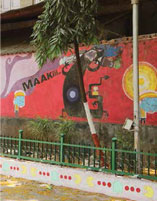
Like I explained to you, the raison d'être of this college is to encourage creativity at all levels. And creativity has a way of spilling on to other canvases as well hence the presence of so many JJ alumni in so many other fields as well.
Creativity is not just training, it's a way of life, it's an attitude that goes beyond merely carrying out the technicalities of one's job. One of my favourite examples is that of the late Gautam Rajadhyaksha, celebrity photographer extraordinaire. He had a way of getting under the skin of his subjects and capturing their best likeness in all spontaneity. Be it Asha Bhonsle, Kajol or Madhuri Dixit he would ensure the model of the day was relaxed, at ease and in a great mood. He would put on music, possibly crack a joke and amidst the laughter and bonhomie, the shoot would result in the most historic photographs ever.
That is the kind of dedication we want to encourage.
By Kalyani Sardesai